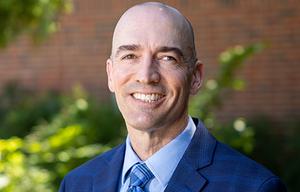
Education
Report shows growing interest in Oklahoma school-choice program
Ray Carter | June 6, 2025
Oklahoma families’ desire to participate in the Oklahoma Parental Choice Tax Credit program and provide their children access to private schools continues to grow.
A new Oklahoma Tax Commission report shows the families of 857 more children have received approval to participate in the program in the past month alone.
In a June 4 update, the Oklahoma Tax Commission reported that school-choice tax credits have now been approved for 37,428 children in Oklahoma.
The Oklahoma Parental Choice Tax Credit program provides refundable tax credits of $5,000 to $7,500 per child to cover the cost of private school tuition, with the largest credits going to those with the lowest income.
The program has five income brackets: Families earning up to $75,000 can receive a $7,500 per-child refundable tax credit; those earning $75,001 to $150,000 get a credit of $7,000 per child; families with income between $150,001 to $225,000 qualify for a $6,500 credit; those earning $225,001 to $250,000 receive a $6,000 credit; and those earning $250,001 and up qualify for a credit of $5,000 per child.
3,278 children whose families applied for Oklahoma’s school-choice tax credit for the 2025-2026 school year are switching from the public-school system to private-school education for the first time.
Families in the two lowest income brackets are prioritized above those with income above those levels if the program reaches its $250 million cap.
The report showed that 3,278 children whose families applied for the school-choice tax credit for the 2025-2026 school year are switching from the public-school system to private-school education for the first time.
The number of children who have accessed private education for the first time since the program’s launch is likely much higher since the Tax Commission report did not report “switchers” during the program’s first year-plus of operation, which began in January 2024.
Of the 542 public school and charter school districts in Oklahoma, only 35 had enrollment exceeding 3,278 in the 2024-2025 school year, according to state records.
Nearly 70 percent of children using the Oklahoma Parental Choice Tax Credit program to leave public schools and enroll in private schools for the first time in the 2025-2026 school year are from low- and middle-income families.
Similarly, the majority of all children benefiting from the program come from low- and middle-income families, and nearly 60 percent of tax credits awarded so far have gone to children from those families.
The report shows that 10,264 students receiving school-choice tax credits are from families that qualify for food stamps or Medicaid, are considered “financially disadvantaged,” are homeless, or have household income below $75,000.
Another 10,289 children come from middle-class families with household incomes between $75,001 and $150,000.
A household in which both the mother and father work as Oklahoma public-school teachers would have a household income of more than $120,000.
To put that in perspective, a household in which both the mother and father work as public school teachers would fall into the $75,001-to-$150,000 category, having a household income of more than $120,000, based on the average teacher’s salary in Oklahoma.
Nearly 75 percent of children receiving the credit come from families with incomes below the program’s top bracket (those with household earnings exceeding $250,000 annually).
Notably, families who are shifting children from the public-school system to private schools are forgoing a dramatically larger taxpayer subsidy in public schools.
According to a recent report from the National Education Association, in the 2023-2024 school year, Oklahoma public schools had revenue receipts per student of $14,066 based on average daily attendance. That’s nearly double the maximum school-choice tax credit of $7,500 per child offered through the Oklahoma Parental Choice Tax Credit.
Supply Side
As thousands of students shift from public school to private school, many private schools are now facing the challenge of meeting growing demand with existing classroom space. Even though many Oklahoma private schools have increased their enrollment significantly, some school-choice opponents still gripe that private schools have not built new facilities in the brief year-and-a-half of the Oklahoma Parental Choice Tax Credit program’s existence, and also complain that more new private schools should have launched during that time.
During legislative debate on May 21, state Rep. John Waldron, a Tulsa Democrat who was personally educated in a private K-12 school but nonetheless opposes school choice for others, declared, “Few private schools have opened up or expanded to take in kids from economically challenged regions.”
However, the figures reported by the Oklahoma Tax Commission indicate that private schools are now accepting thousands of children from low-income families, including those on welfare, and data from other states indicates the supply of private schools is likely to increase over time, even if the launching of new schools and/or the construction of new buildings takes time.
Oklahoma families who are shifting children from the public-school system to private schools are forgoing a dramatically larger taxpayer subsidy in public schools.
“The Supply Side of ESAs,” a recent report from EdChoice, notes that the number of private schools has increased in states that have offered significant school-choice programs for several years.
“The number of private schools in the pioneering states of educational choice—Arizona, Florida, Ohio, and Wisconsin—increased between 2011 and 2021,” the report stated.
The report noted that Arizona had up to 351 private schools in 2011. By 2022, the state of Arizona reported that 400 private schools participated in their school choice program.
A national private school survey estimated that Florida had up to 1,884 private schools in 2011. That figure surged to as many as 2,737 private schools by 2021.
In Ohio, there were an estimated 852 to 1,084 private schools in the state in 2011. By 2021, that figure had surged as high as 1,400.

Ray Carter
Director, Center for Independent Journalism
Ray Carter is the director of OCPA’s Center for Independent Journalism. He has two decades of experience in journalism and communications. He previously served as senior Capitol reporter for The Journal Record, media director for the Oklahoma House of Representatives, and chief editorial writer at The Oklahoman. As a reporter for The Journal Record, Carter received 12 Carl Rogan Awards in four years—including awards for investigative reporting, general news reporting, feature writing, spot news reporting, business reporting, and sports reporting. While at The Oklahoman, he was the recipient of several awards, including first place in the editorial writing category of the Associated Press/Oklahoma News Executives Carl Rogan Memorial News Excellence Competition for an editorial on the history of racism in the Oklahoma legislature.